The Andes
The Andes Mountain Range, it’s the youngest mountains chain the world. It enjoys an amazing diversity of life.
Podcast: Play in new window | Download

The Andes
The Andes Mountain Range, it’s the youngest mountains chain the world. It enjoys an amazing diversity of life.
Podcast: Play in new window | Download

The Amazon Rainforest is the most biodiverse place on Earth. Millions of voices speak up everyday. Let’s listen to what they say!
Podcast: Play in new window | Download
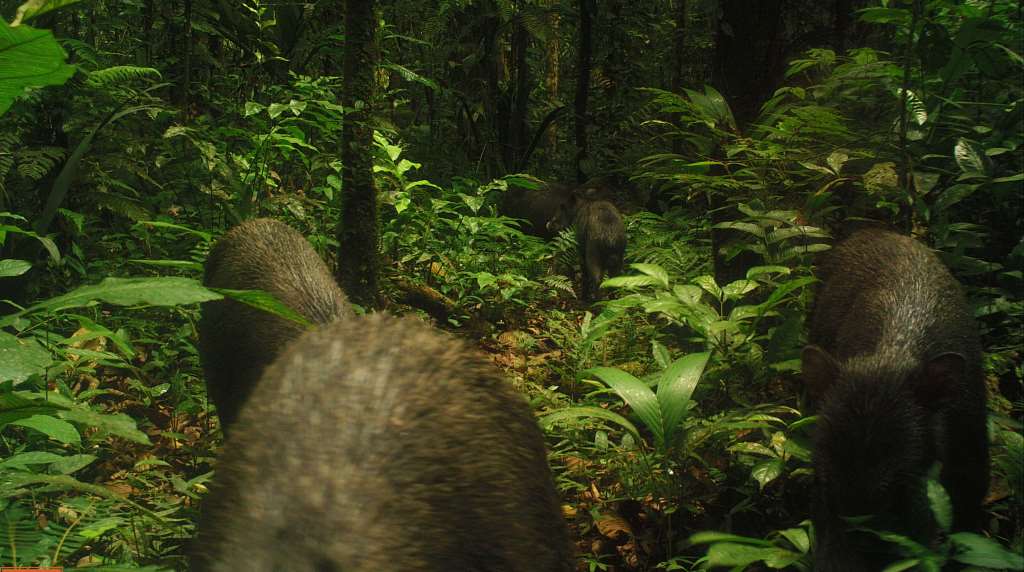
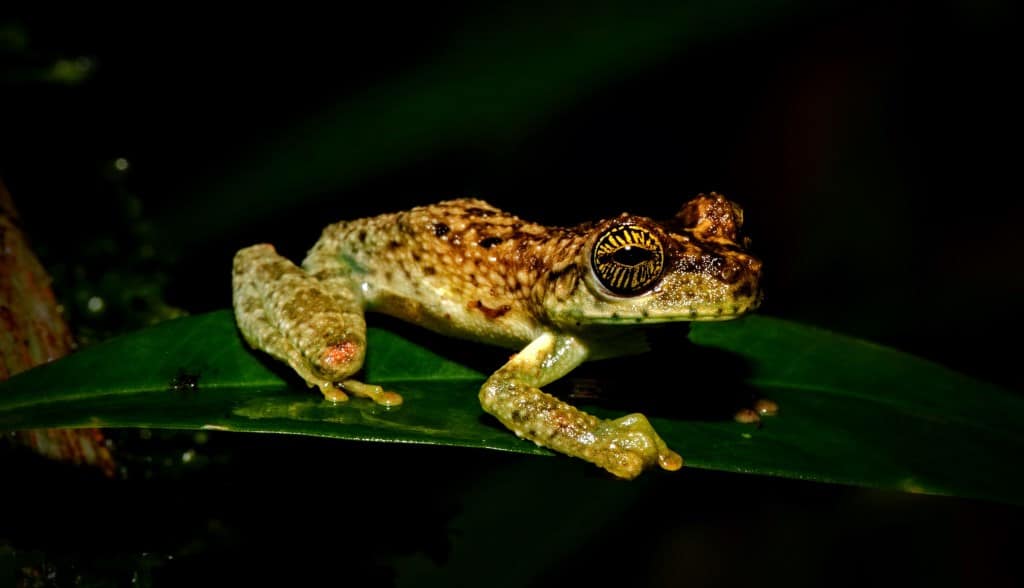
The Amazon Rainforest in Ecuador or “Oriente” is one of the most biodiverse places on the surface of our Planet!
In this post, you will learn 10 amazing facts about the Ecuadorian Amazon Rainforest.

Before we sink into some facts about the Amazon Rainforest in Ecuador, let’s watch a video filmed in Yasuni Biosphere Reserve ( National Park & Waorani Reserve ).
The Yasuni is said to be where Life exploded into millions of forms and shapes it is one of the most diverse ecosystems in the world.
Watch on YouTube via Fernando Vaca
Watch a Video of Yasuni National Park in Ecuador
Watch on YouTube via Fernando Vaca
Now, let’s learn more about the Amazon Rainforest in Ecuador.
The Amazon Rainforest in Ecuador represents only 2% of the Amazon Basin which stretches across 9 countries, Bolivia, Brazil, Colombia, Ecuador, Guyana, French Guiana (Overseas France), Peru, and Suriname.
The Amazon Rainforest takes up only seven percent of the planet’s land mass, yet half the earth’s plant species are found in the Amazon Rainforest.
High net productivity is experienced in birds, mammals, reptiles, and insects, Life flourishes in every corner here.
The following facts focus on the Ecuadorian Amazon Rainforest.
1) There is an incredible number of tree species in the Amazon Rainforest in Ecuador,
Just 62 acres (1/4 of a square kilometer) of the Amazon Rainforest in Ecuador supports over 1,100 species of trees.
That makes it among the highest of any region in the world.
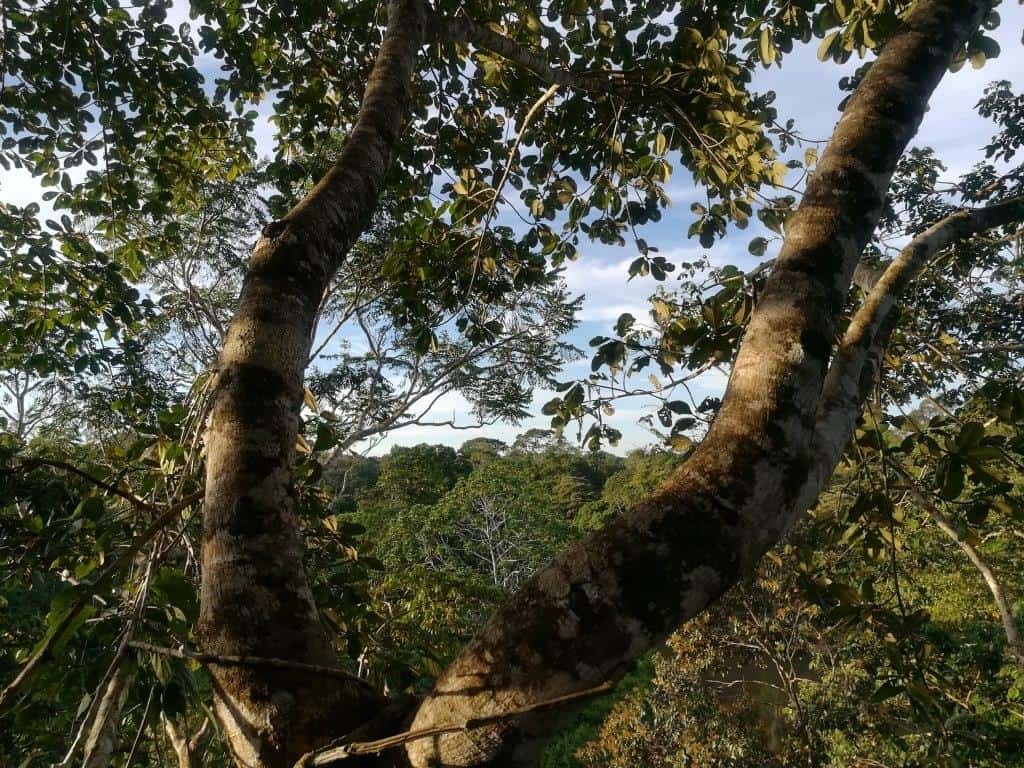
There are more species of trees and bushes in one hectare here than in all of North America!
2) The Amazon Rainforest is the largest region in Ecuador.
There are several Bioregions on mainland Ecuador, the Costa (Coastal lowlands), the Sierra (Andean highlands), and the Oriente (the Amazon).
The Amazon Rainforest in Ecuador covers the eastern portion of the country. It includes six Ecuadorian provinces: Napo, Orellana, Pastaza, Sucumbios, Morona Santiago, and Zamora-Chinchipe.
Amazon Rainforest in Ecuador Map
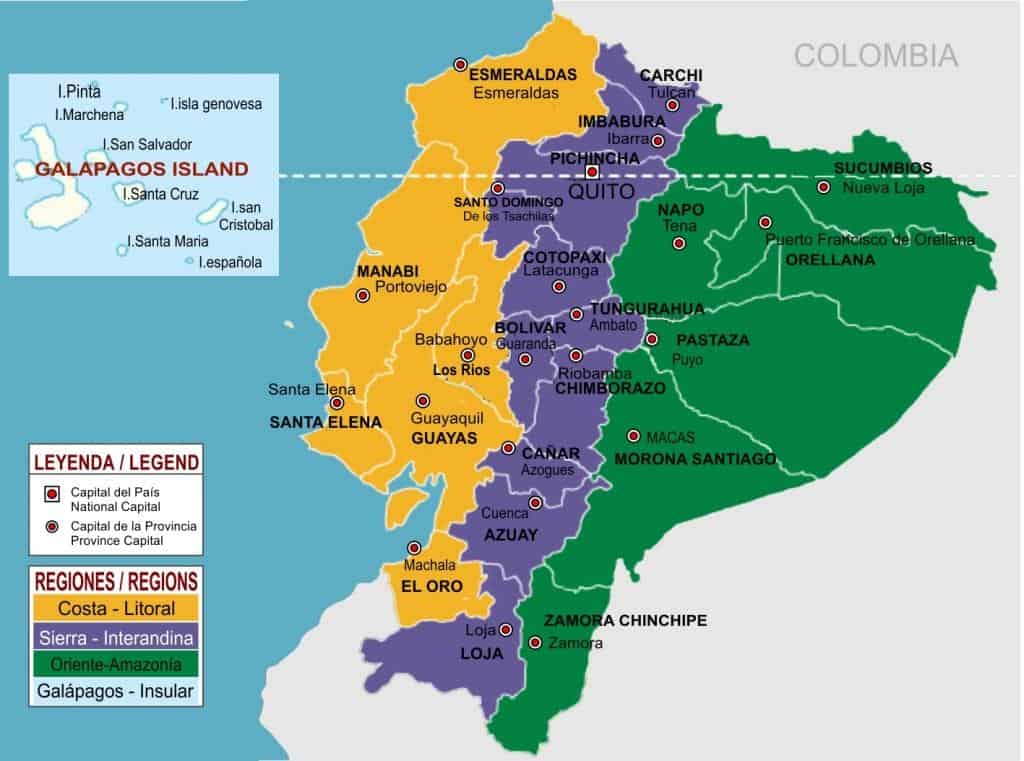
Image Credit – Foros Ecuador
3) The number of animal species found in Ecuador’s Amazon is outstanding.
The Amazon in Ecuador is boasting of animal species with no rivals.
In Yasuni Biosphere Reserve alone there are 150 amphibian species (more than the U.S. and Canada combined), 121 species of reptiles, over 200 species of mammals, over 596 birds, and 382 species of fish.
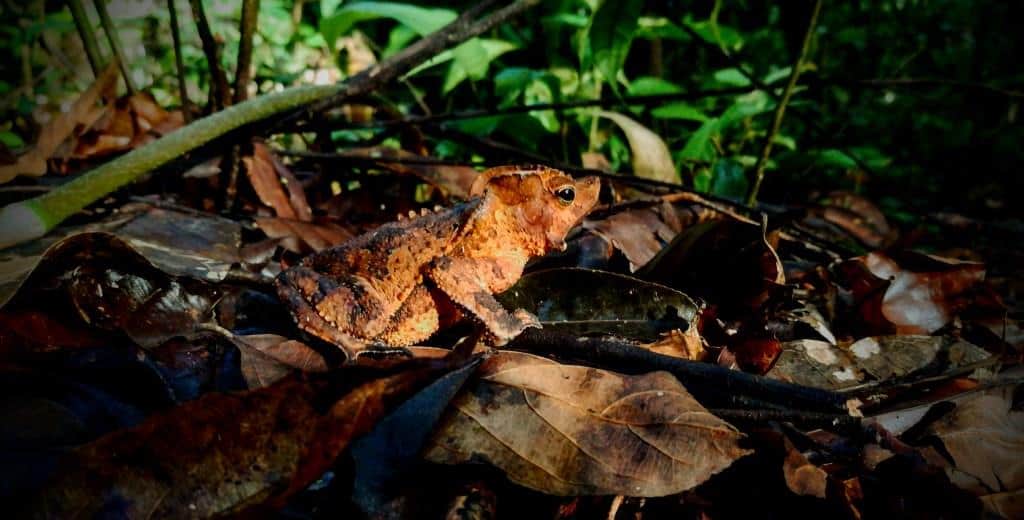
Insects also love the Amazon. Over 70,000 species of insects can be found in one acre of rainforest.
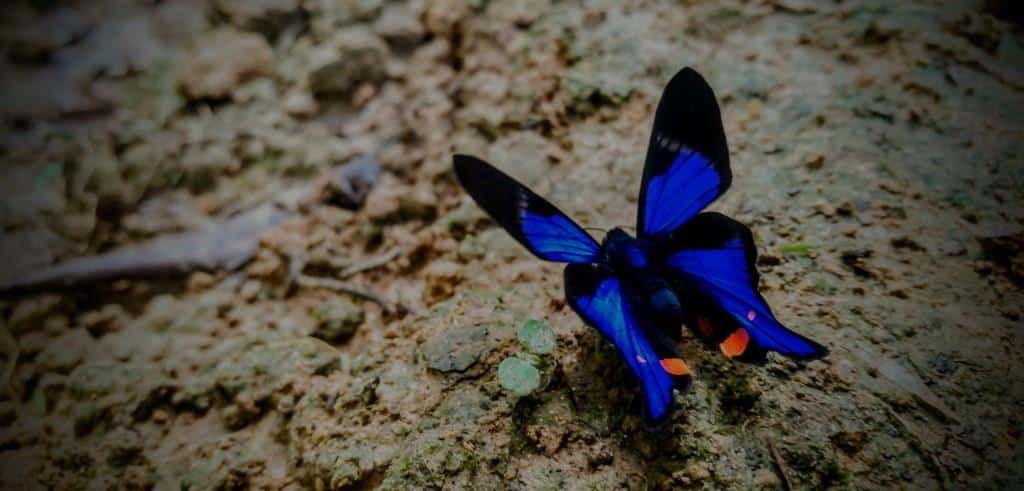
In the following video, you’ll see some of the animals that call the Amazon home.
This video was filmed in Yasuni National Park.
Animals of the Amazon Rainforest in Ecuador Video
Watch on YouTube via National Geographic
4) The Ecuadorian Amazon is a bird watcher’s paradise<span
With over 587 species of birds, the Amazon Rainforest in Ecuador is a birder’s paradise. Birdwatching trips are a huge draw for visitors to this area.
With a knowledgeable guide, you could see around 250 to 300 species during your trip.
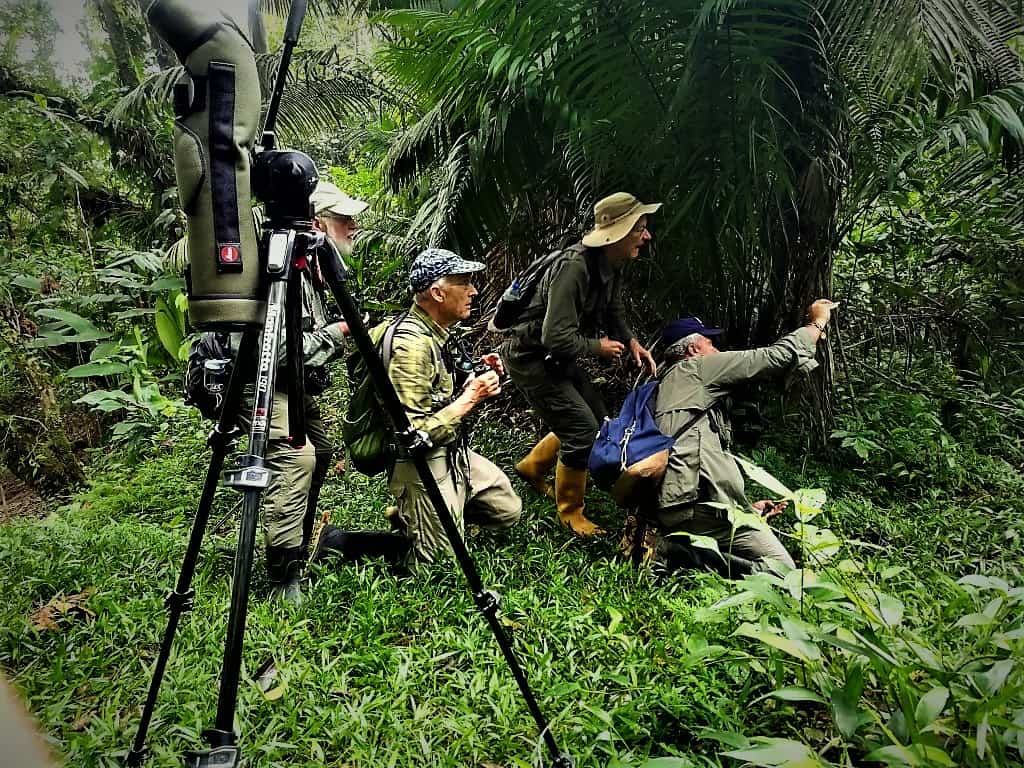
The following video highlights some of the bird species in the Ecuador Amazon.
Birds of the Amazon Rainforest in Ecuador Video
Watch on YouTube via Fernando Vaca
Learn more about Birds of the Amazon Rainforest.
5) There are 4 National Parks in Ecuador’s Amazon Jungle
There are 5 National Parks in the Amazon Rainforest of Ecuador to promote the Conservation of Nature:
Yasuni National Park and Biosphere Reserve are said to be the most biodiverse place on earth. It’s Ecuador’s largest National Park and is a UNESCO World Biosphere Reserve.
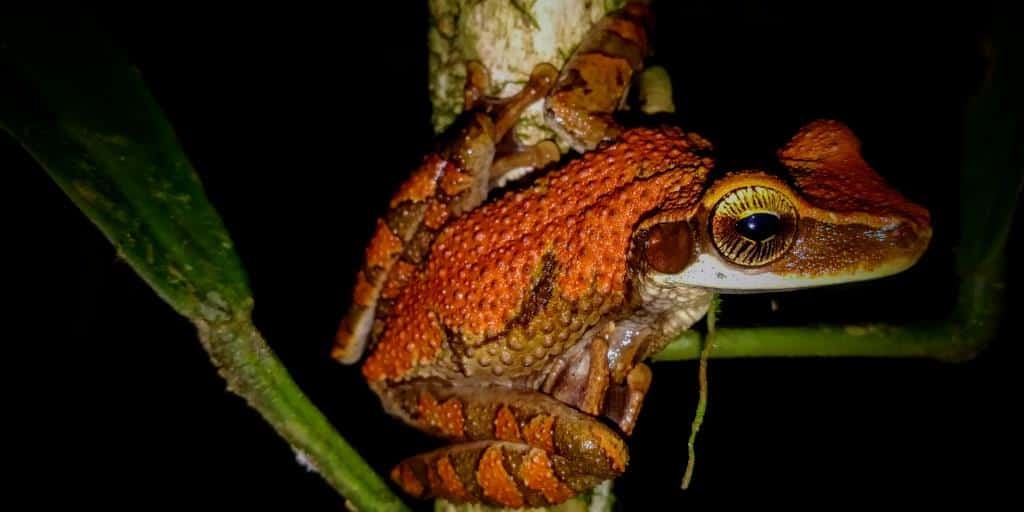
There are other areas such as Cuyabeno Wildlife Reserve, Limoncocha, which provide safe areas for wildlife.
These areas help protect the Amazon and are wonderful places to visit.
The following video was filmed in Yasuni National Park and highlights 28 amazing mammal species in this area.
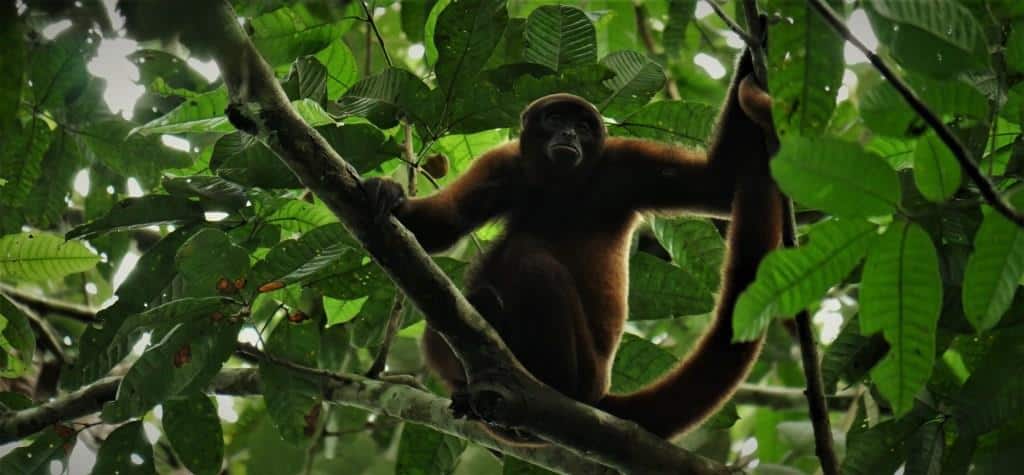
Watch on YouTube via Fernando Vaca
6) There are 7 major cities within the Amazon Rainforest in Ecuador
The seven cities include:

The population in the Ecuadorian Amazon Rainforest is over 739,000, including the cities and six provinces found within the rainforest. There are still large areas in the Amazon Jungle in Ecuador that are uninhabited.
7) There are 9 indigenous cultures in the Amazon
There are 9 indigenous nationalities in the Ecuadorian Amazon: Kichwas, Shuar, Achuar, Shiwiar, Cofán, Siona, Secoya, Zápara, Andoa, and Waorani.
Some of them welcome tourists which is wonderful for family cultural experiences in Ecuador.
Visiting the Amazon Rainforest in Ecuador
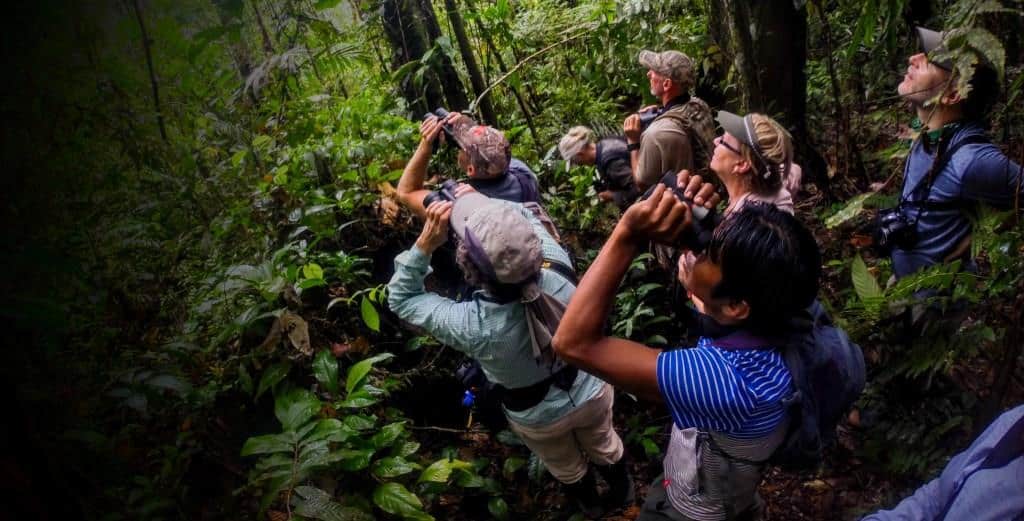
Two tribes (the Tagaeri and Taromenane) who live within the Yasuni National Park choose to live in isolation.
8) The climate is the same year-round
The climate in the Ecuador Amazon is pretty much the same year-round, warm and rainy.
Animals in the Ecuadorian Amazon
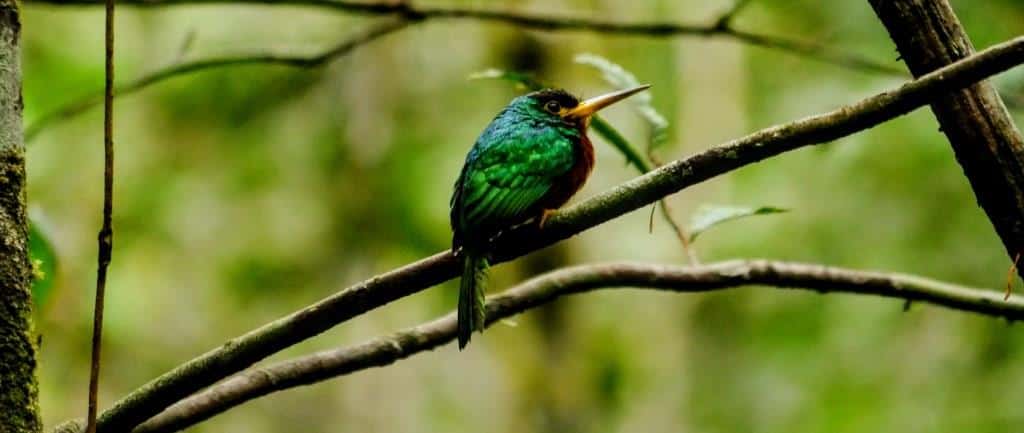
The temperature averages around 28°C (82°F) in the daytime and drops to around 17°C (62°F) at night.
From February to May it experiences the highest rainfall while July through August are the drier months.
The Amazon Rainforest in Ecuador usually receives around 3500 mm of rain every year, so even during the drier months, heavy rainfall can happen at any time.
9) The Amazon River was discovered in Ecuador
The Amazon River was discovered by a Spanish expedition started in Quito in 1541 by an explorer and conquistador named Francisco de Orellana.
He discovered the river in 1542 and initially named it Rio de Orellana.
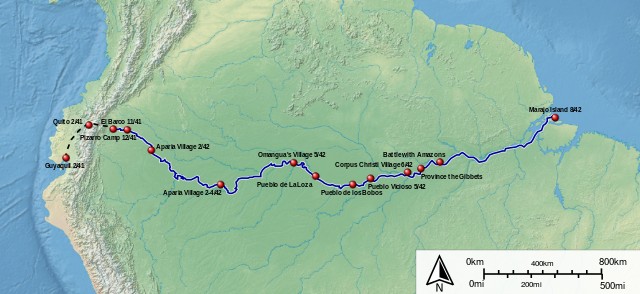
Travel to the Amazon in Ecuador
As he explored he battled with a tribe of Tapuyas. The women of that tribe fought alongside the men. He later named the river after the Amazons – a tribe of women warriors in Greek mythology.
10) The Amazon in Ecuador is threatened. There is a lot of oil (around 800 million barrels) under the Ecuadorian Rainforest.
Extracting it puts the Amazon at risk, including the plants, animals, and way of life for the people that live there.
Deforestation and illegal logging also threaten the area.
Efforts are underway to protect the Amazon Rainforest in Ecuador.
Will You Visit the Amazon Rainforest in Ecuador?
The Amazon is an exciting place to visit. Are you planning a trip?
Have you already visited Amazon?
Please share your thoughts by commenting on this post.

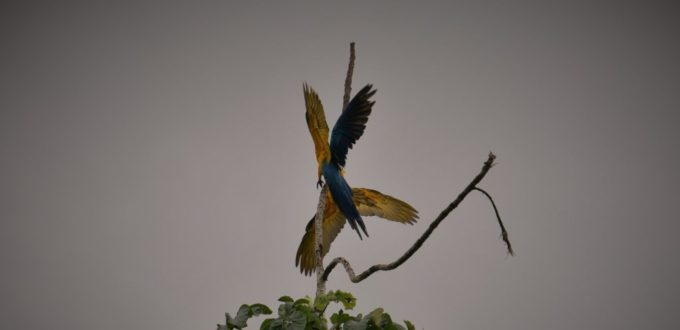
Ecuador is a world birding destination by tradition, from Quito, its capital you to explore a wide array to ecosystem present in the country with such and easy stroke. The Amazon Rainforest in Ecuador offers many birding destination with chances of seen many colorful species from canopy towers to easy oxbow cruising dugout canoes and WIFI.
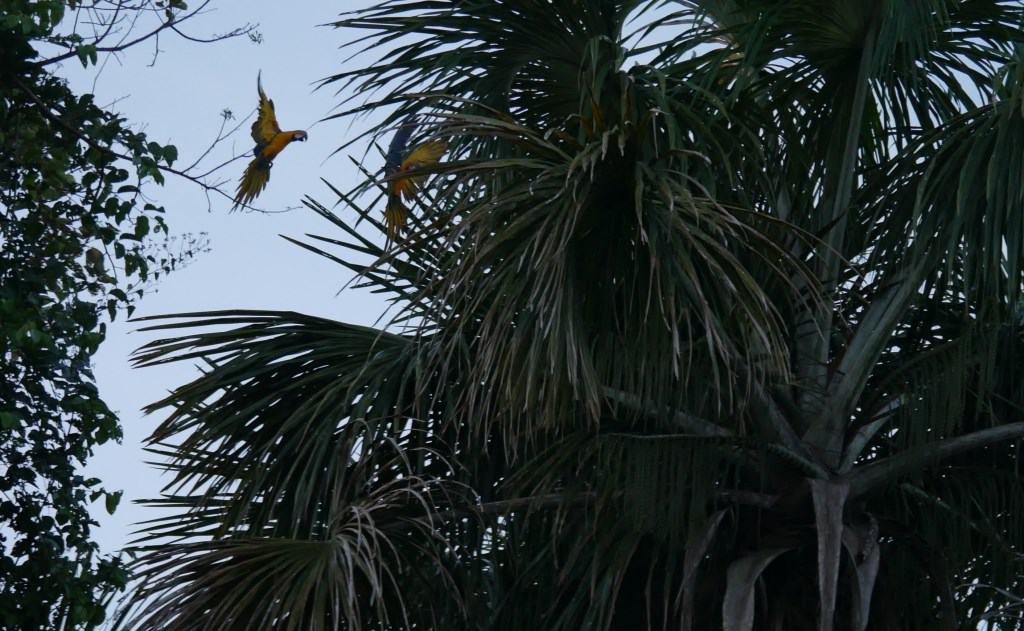
Wild and Remote, away from everything. The Shiripuno Rivers is wild sandy river, nestled core of the Yasuni, with many bends with trees covered in epiphytes and lianas and with many tree trunks in the river bottom already, shallow in most parts; The Shiripuno River is surrounded by miles of unbroken Amazon Rainforest.
When birding along the Shiripuno River, you will be transported to the early adventures of the greatest naturalist such as Henry Bates, Alfred Wallace, Humboldt or Darwin, watching toucans, macaws, oropendolas, Flycatchers or Tanagers and mammals, frogs, snakes, trees.. many trees.
The Logistics of the Shiripuno Rivers is unique, the exploration goes beyond the limit of human interaction, it’s the beginning of the wild and unpredicted. We had entered the domains of the forest tales and forest gods: Jaguars, Harpy, Anaconda, Caiman.
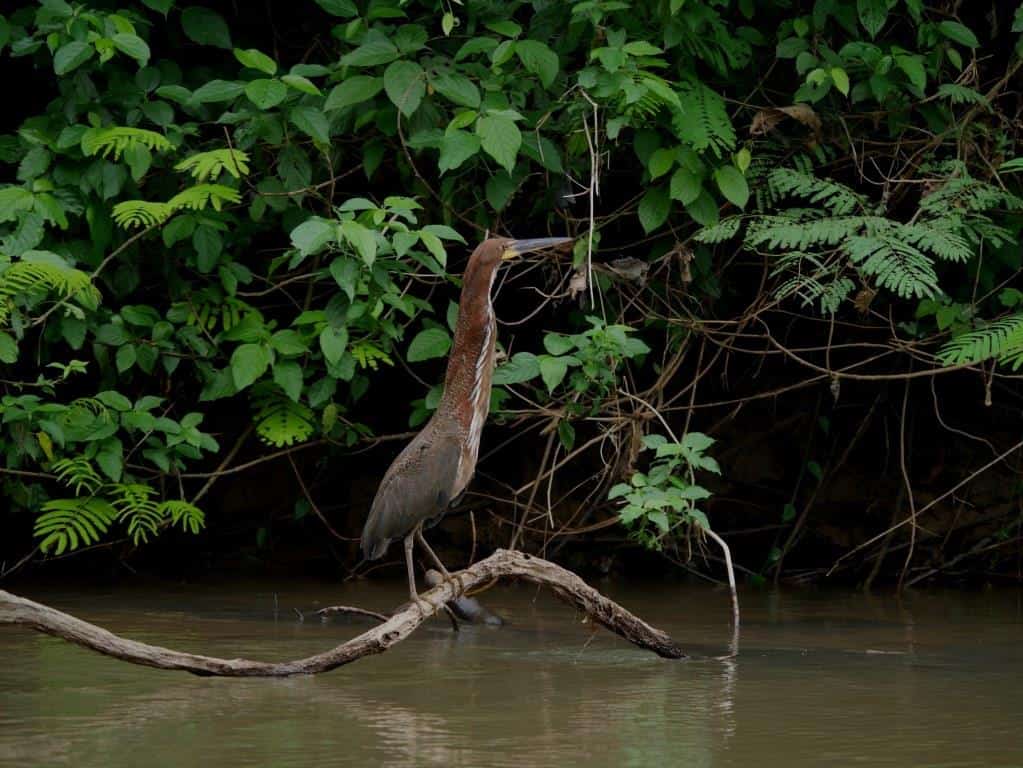
When going Amazon Birding in the Shiripuno River start scanning to the Treetops, always searching for the Queen: Harpy Eagle, check the tallest point in the area, dead branches, for falcons; watch on brand new palm spikes for puffbirds, kingbirds, shaded horizontal medium-sized branches for nunbirds, trogons. From time to time also check the the big branches for Curassows and Large Raptors Search ahead of time, predict in the next River Bend, check on logs and trunks for swallows, Kingfishers, Sunbitterns, Sungrebe or Herons.
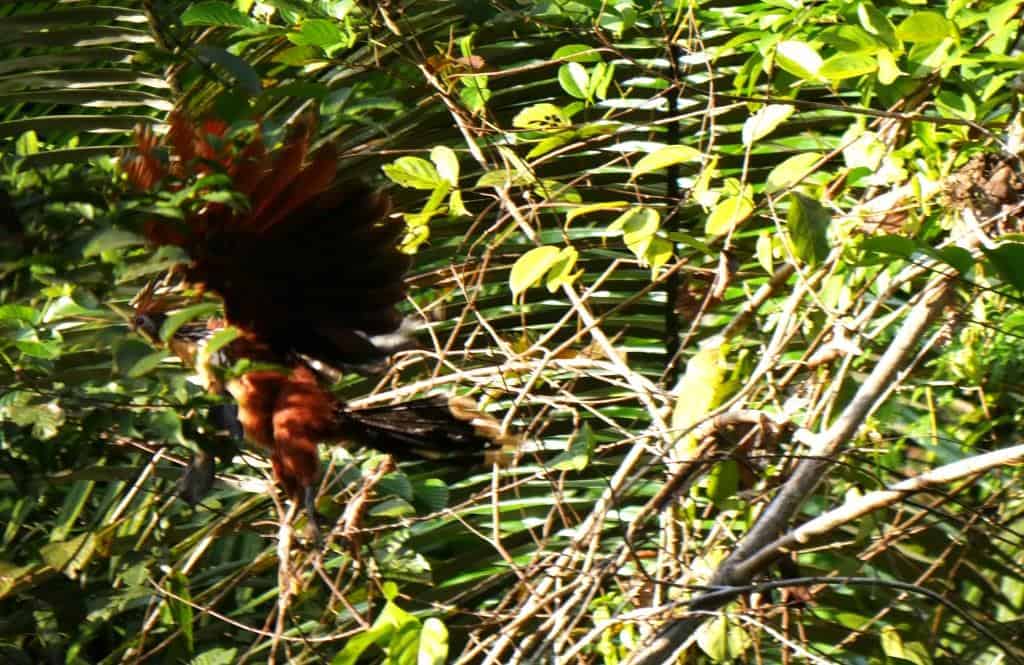
The Birding in the Shiripuno River, might catch you off guard.., be ready for birding in move! Practice with Oropendolas, Flycatchers and other easy to spot. You will be birding as the boat move, you will lose a few individuals until pick it up.
There is time to stop to watch birds while drifting in the afternoons or early mornings to listens to the dawn chorus with Chachalacas, Oropendolas, Antwrens, Antshirkes, Woodcreepers and many others join the party.
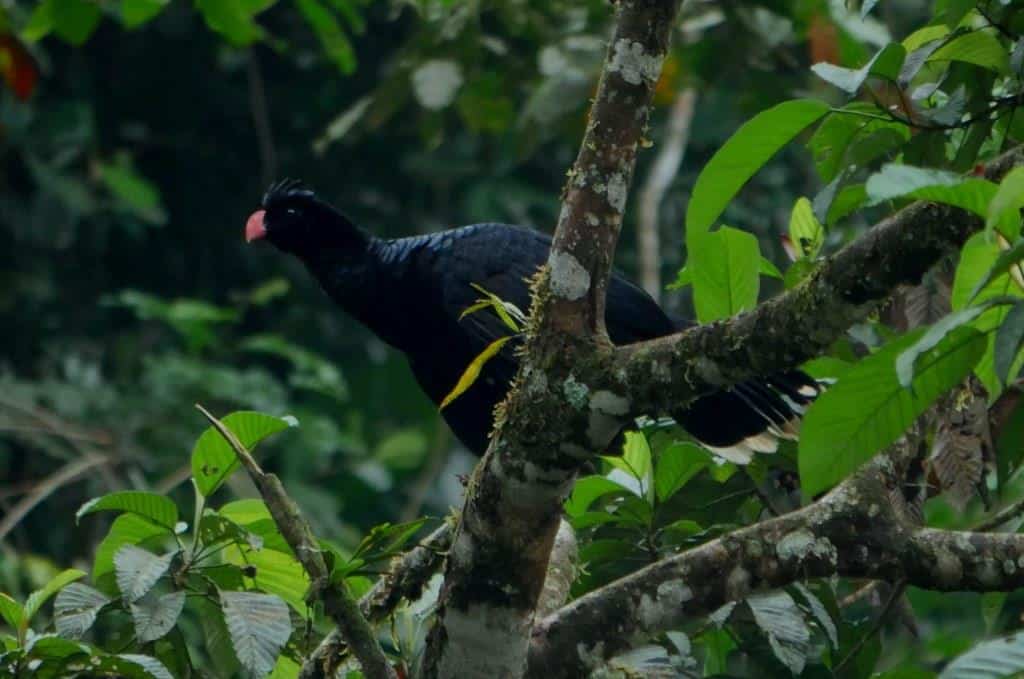
The Shiripuno River is connected to a large community of birds living in the riversides of the main tributaries such as the Napo River and the Amazon River itself. Birds such as Hoatzin, Russet-backed Oropendola, Great Kiskadee, Blue-and-Yellow Macaw and many others rivers specialist are here. There is no River Islands along the Shiripuno River but enough soil conditions and dynamics to support same species community.
The river bends are covered by early successional vegetation, constitute a large proportion of the total riverine habitat in Amazonia. After formation, these rivers bends travel downstream, in a sense, by constant erosion of the older, upstream portions, and the constant increase in size by the deposition of sand and silt on the downstream ends.
This constant change creates an array of early successional habitats on the river bends. The use of and specialization on such habitats by Amazonian birds has remained poorly known.
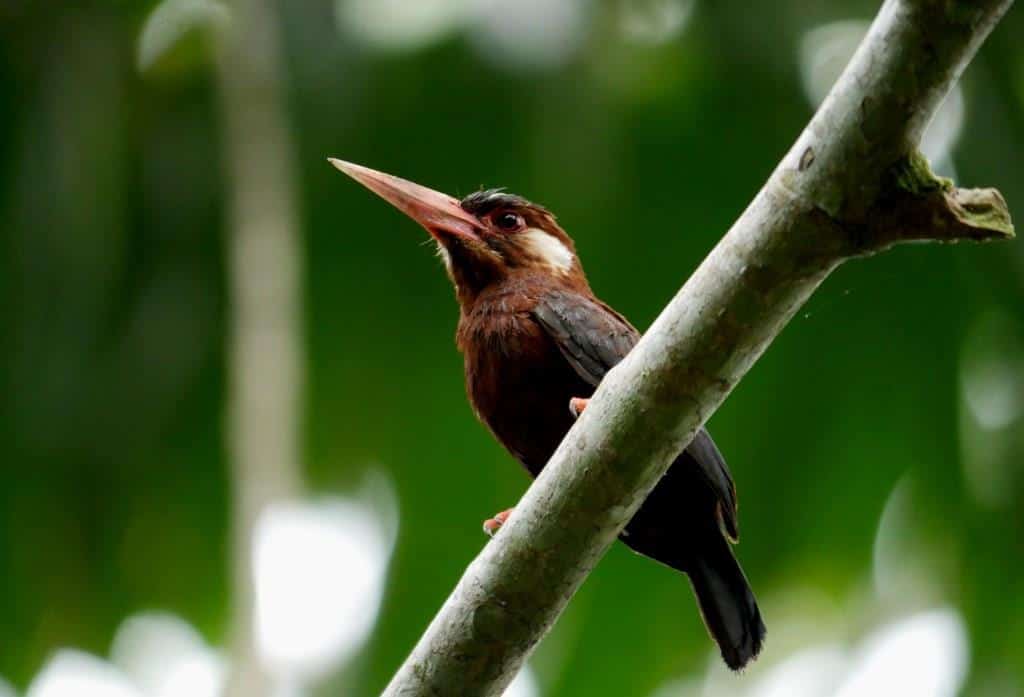
A series of dense foliage made with Giant Gynerium grass, Cecropia Trees, Red Guarea Trees, Triplaris Trees, Ficus Trees, Inga Trees, Mimosa Vines, Cats Claws Vines,Amazon Birding: The Shiripuno River
The Moriche Swamps are made mainly by Moriche Palms (Mauritia flexuosa) a dominant palm tree, Wild Costus Ginger, Cats Claws Vine, Pseguria Vines and more. Many animal species; several bird species, such as the Blue-and-Yellow Macaw, Red-bellied Macaw, Sulphury Flycatcher, and Moriche Oriole, use it for nesting and food. Tapirs, peccaries, fish and monkeys depend on the forest habitat.
Along the Shiripuno River creates a meander over the time, due to the river’s eroding the bank through hydraulic action, abrasion and erosion. After a long period of time, in the Shiripuno River the meander becomes very curved, and eventually the neck of the meander becomes narrower and the river cuts through the neck during a flood, cutting off the meander and forming an oxbow lake. The bird community living in here are Hoatzin, Kingfishers, Flycatchers, Donacobius, Herons, Oropendolas and Caciques colonies can be found.
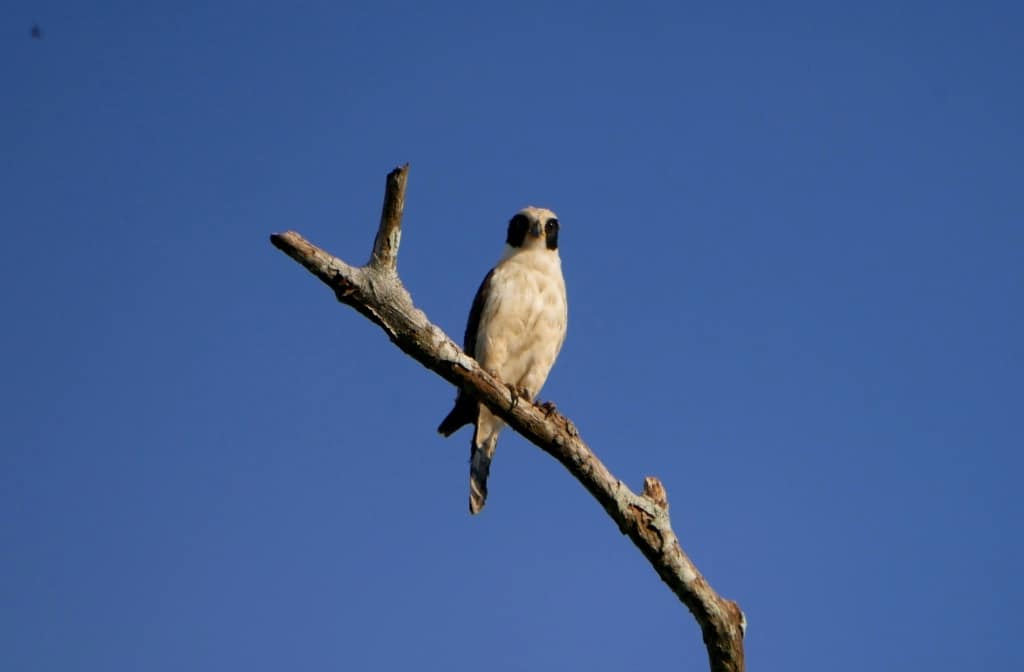
As many location through the Amazon Basin and its tributaries, high annual rainfall that occurs mostly within a rainy season results in extensive seasonal flooding of areas from stream and river discharge. The result is a 1–6 m rise in water level, with nutrient rich waters. Specialized avifauna such as the Great Antshrike, Undulated Tinamou, Dusky-throated Antshrike flocks also presents when the plant community allows it.
Terra Firme (“solid ground”) is the most widespread topographical feature: Gently undulating hills composed of layers of alluvial soil that were deposited as much as 2.5 million years ago and subsequently uplifted to positions above flood level.
In the terra firme, the dead organic matter quickly decays and is recycled. Much of the Ecuador Rainforest is covered by an immense terra firme moving towards the west into montane forest in the Andes. The bird species richness in the Amazon Rainforest reaches its peak in terra firme forest, home of Antbirds, Antwren, Antshrikes, Woodcreepers, Foliage-Fleagers and Forest Falcon and many joining the mixed flocks moving around through the dense foliage.
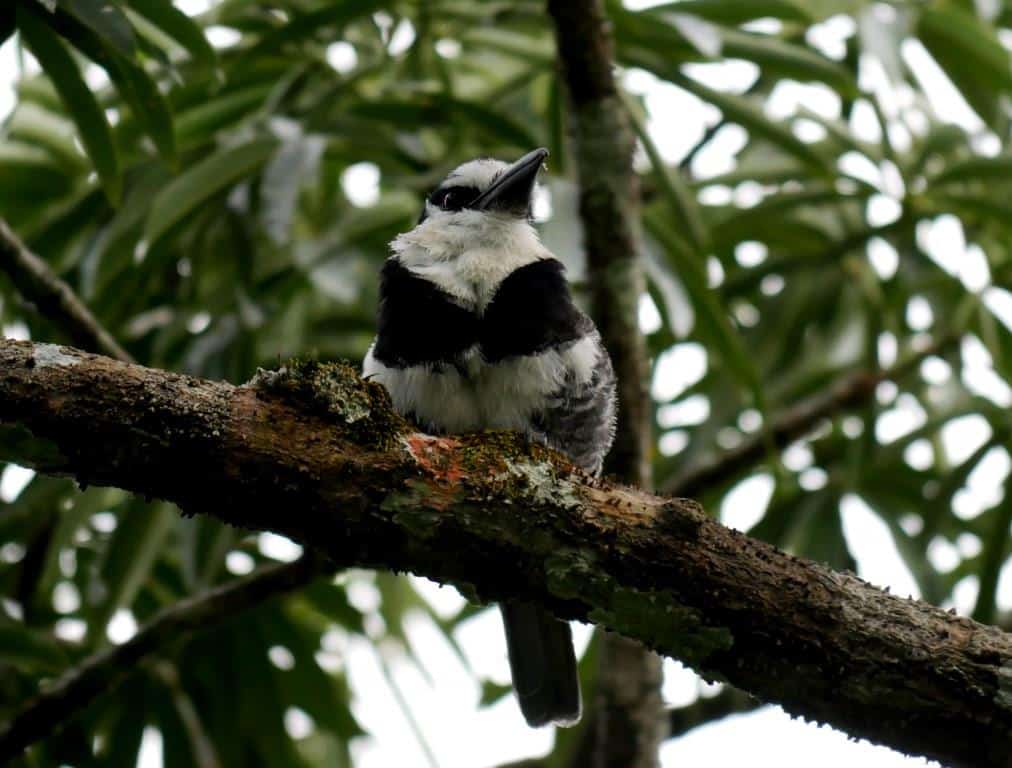
The special species we focused during our Amazon Birding in the Shiripuno River show a little bite a degree of specialization on specific microhabitats, such as palms trees, lianas, treetops, and foraging substrates, such as suspended dead leaves, dead trunks, flowers and fruits.
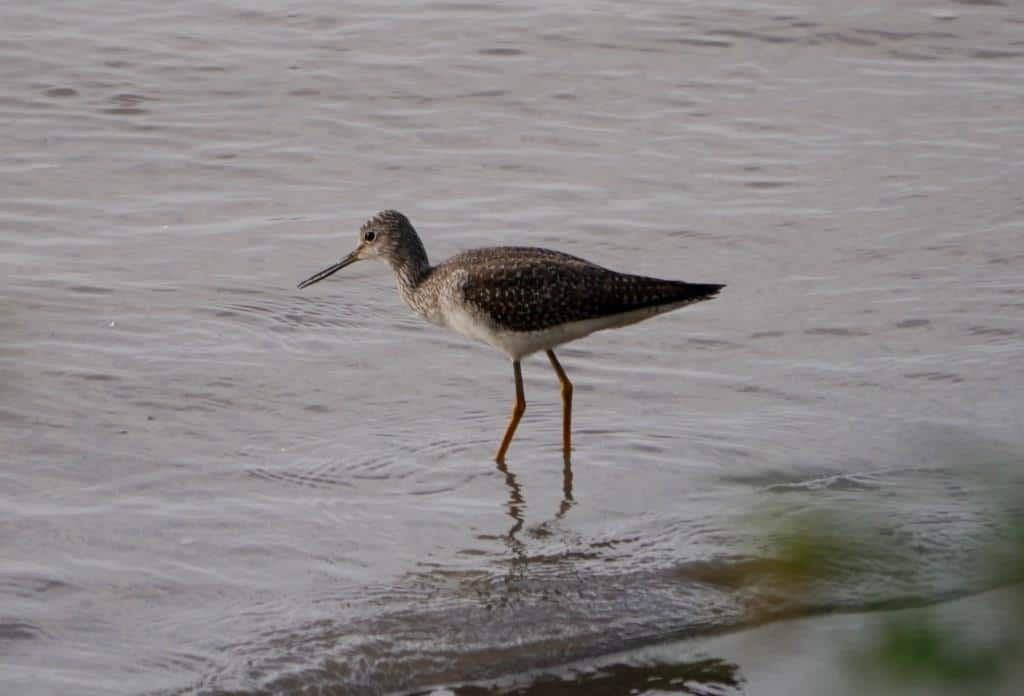
Although, The Shiripuno River avian richness is the contribution by habitats other than primary forest that elevates the richness to such high levels in western Amazonia, some of the specie you can be seen while birding in the remote location in Ecuador.
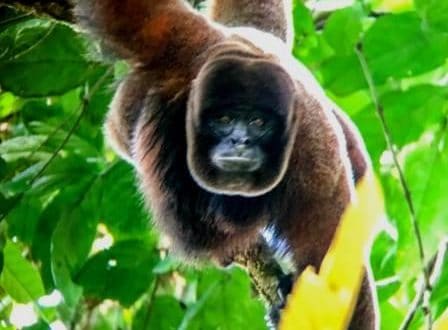
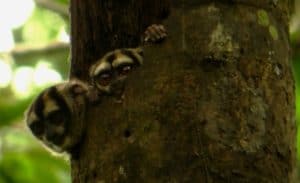
The Monkeys of the Rainforest are the most diverse group of mammals moving throughout the Amazon Basin.
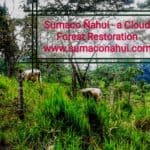
Most of them spend their lifetime in the dense canopy covering all kind of habitats monkeys find a way to survive and diversify, many have a prehensile tail, one of the most interesting feature Nature has come out to fix the the challenge of reaching the edge of the trees in the canopy.
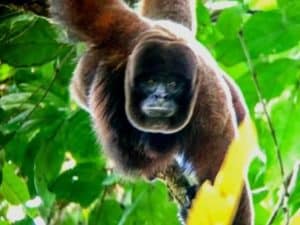
The Monkey of the Rainforest are a very important creatures of the forest, in many ways for example: some species feeds on fruits in the forest, they do best dispersing the genes of of thousands of trees and lianas, Other species feeds eats a little bite of everything and they do the best insect control for many species of tree and lianas.
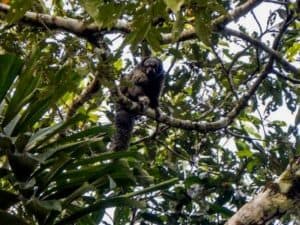
Many species of Amazon Rainforest Monkeys covers a lot of area in their outing everyday, for fruits, flowers, invertebrates and forest clay licks. The Red Howler (Alouatta seniculus) and the White-bellied Spider Monkey (Ateles belzebuth) come down to forest clay licks to eat clay and drink the water if it is present.
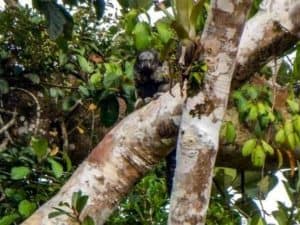
The Yasuní Biosphere Reserve in Ecuador is the largest tract of Tropical Rainforest in the Western Amazon Basin, one of the most biologically diverse on the planet. Within the forest of the Yasuní is located Shiripuno Amazon Lodge where lives 9 species of monkeys, all of them sharing the forest resources in at this unique area.
Here is a list of the Monkeys you can find while visiting the Shiripuno Amazon Lodge found in the Yasuní Biosphere Reserve.
Callitrichidae Familia
1. Pygmy Marmoset (Cebuella pygmaea)
Cebidae Familia
1. Ecuadorian White-fronted Capuchin (Cebus aequatorialis)
2. Ecuadorian Squirrel Monkey (Saimiri cassiquiarensis)
Aotidae Familia
1. Aotus vociferans Mono nocturno vociferante Noisy Night Monkey
Pitheciidae Familia
1. Red-crowned Titi (Plecturocebus discolor)
2. Napo Saki (Pithecia napensis)
Familia Atelidae
1. Colombian Red Howler (Alouatta seniculus)
2. White-bellied Spider Monkey (Ateles belzebuth)
3. Humboldt’s Woolly Monkey (Lagothrix lagothricha)
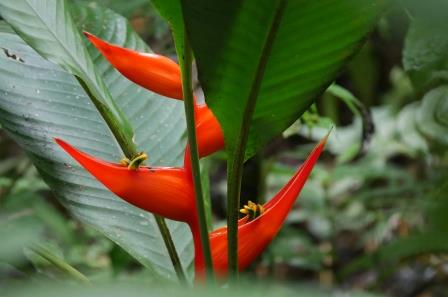
When we visit the Rainforest for the first time, the familiar Plants will blow our minds away in many ways, the amount of different Plants living in here is overwhelming.
As we go deep in our journey, we start picking up the regular plants around us by looking at their natural characteristics such as leaf shapes, leaves arrangments, flowers, and fruits.
Many of the stereotype plants have adapted to live in different habitats such as terra firme, várzea, oxbow lakes, and landslides, and in all the forest strata are present.
The well-established plants of the Amazon Rainforest are popular for many species of animals, just think about Cecropia Tree, it brings several species of Monkeys, Bats, Birds, Ants, Butterflies, Sloths, and Kinkajou just to list a few!
We have prepared a small collection of the most common genera of plants you will find useful while you explore the Diversity of Life in the Cuyabeno Wildlife Reserve and Yasuni Biosphere Reserve.
Check the list of the Common and Conspicuous Plants of the Rainforest below:
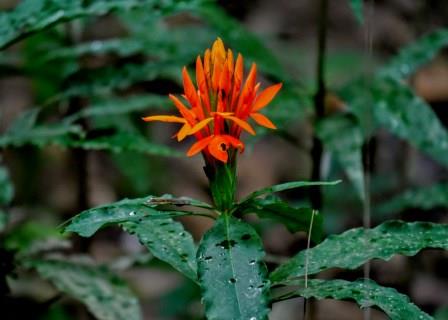
Aphelandra is a genus of flowering plants in the family Acanthaceae, native to tropical regions of the Americas.
They are evergreen shrubs growing to 1–2 m tall, with opposite, simple leaves 5–30 cm long, often with white veins.
The flowers are produced in dense spikes, with brightly colored bracts. Several species are grown as houseplants for their patterned leaves and brightly colored inflorescences.
Philodendron is one of the largest genera in the Araceae family. It has an extremely diverse array of growth methods.
The habits of growth can be epiphytic, hemiepiphytic, or rarely terrestrially. The leaves are usually large and imposing, often lobed or deeply cut, and may be more or less pinnate.
They can also be oval, spear-shaped, or in many other possible shape variations.
The leaves are borne alternately on the stem; juvenile leaves and adult leaves can be drastically different from one another.
When philodendrons are ready to reproduce, they will produce an inflorescence that consists of a leaf-like hood called a spathe within which is enclosed a tube-like structure called a spadix. Birds eat their fruits
The name derives from the Greek words Philo- or “love, affection” and dendron, or “tree”.
Anthurium is a genus in the Araceae family often growing as epiphytes on other plants. Some are terrestrial. The leaves are often clustered and are variable in shape.
The inflorescence bears small flowers which are perfect, containing male and female structures. The flowers are contained in dense spirals on the spadix.
The spadix is often elongated into a spike shape, but it can be globe-shaped or club-shaped. Beneath the spadix is the spathe, a type of bract.
This is variable in shape, as well, but it is lance-shaped in many species. It may extend out flat or in a curve. Sometimes it covers the spadix like a hood.
The fruits develop from the flowers on the spadix. They are juicy berries varying in color, usually containing two seeds.
Anthurium can be poisonous due to calcium oxalate crystals. The sap is irritating to the skin and eyes. Birds such as Euphonias, Tanagers, and Manakins eat their fruits
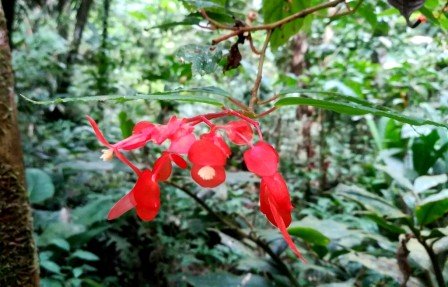
Begonia are terrestrial (sometimes epiphytic) herbs or shrubs, and occur in subtropical and tropical moist climates, in South and Central America, Africa, and southern Asia.
They are commonly upright-stemmed, rhizomatous, or tuberous. begonia are monoecious, with unisexual male and female flowers occurring separately on the same plant; the male contains numerous stamens, and the female has a large inferior ovary and two to four branched or twisted stigmas.
In most species, the fruit is a winged capsule containing numerous minute seeds, although baccate fruits are also known.
The leaves, which are often large and variously marked or variegated, are usually asymmetric (unequal-sided).
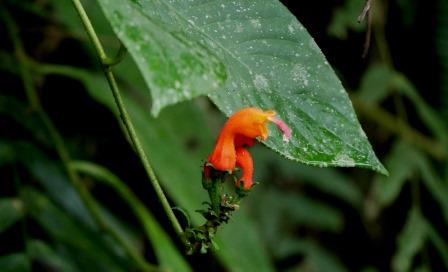
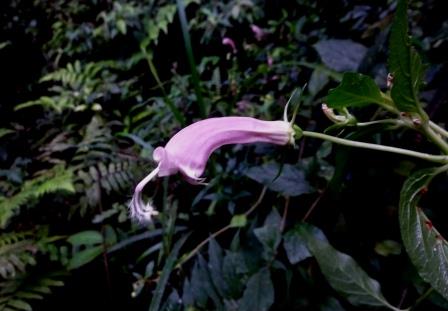
Centropogon is a neotropical endemic genus of plant in the family Campanulaceae. The hummingbirds compete for the nectar of Centropogon
Dichorisandra is a neotropical genus characterized by its slightly zygomorphic flowers with large anthers usually releasing pollen by means of pores at the apex, as well as by its seeds that are embedded in a red or sometimes white aril, and tubers that often form at the tips of the roots.
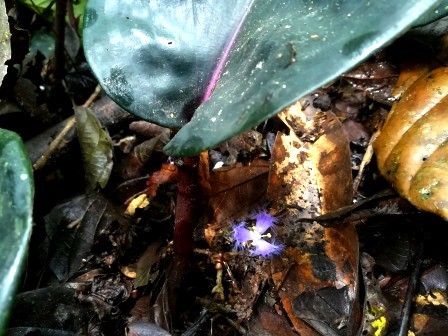
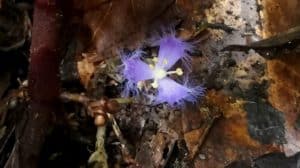
Geogenanthus is a genus of plants with 3 species in the family Commelinaceae (the spiderwort and dayflower family).
The genus is distributed from Colombia to Amazonian Peru and Brazil. Aerial shoots unbranched and determinate in length, up to 0.75 m, with a terminal rosette of leaves. The leaves at lower nodes mere tubular leaf sheaths.
All plant parts somewhat succulents and grow on the floor of primary rainforests and possess a shallow underground, short, branching rhizome.
Flowers consist of 3 green-brown sepals, 3 blue, pink or purple petals fringed with moniliform hairs, 4-6 stamens and 3 connate carpels. Its flowers have no fragrance detectable to the human nose.
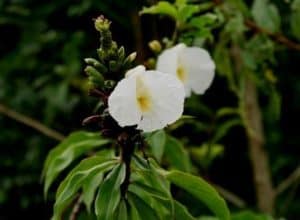
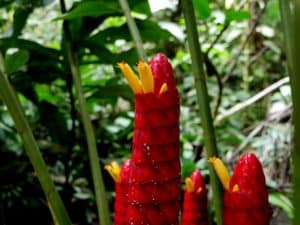
Costus is a genus of perennial herbaceous plants in the family Costaceae, widespread through tropical and subtropical regions of Asia, Africa, and the Americas.
Costus is often characterized and distinguished from relatives such as Zingiber (true ginger) by its spiraling stems. The genus as a whole is thus often called spiral gingers,
Abarema is a neotropical genus of large trees in the legume family. They grow from Mexico to Bolivia.
Most of the species can be found in the Amazon Basin and the Guyana Highlands. They have deep-green fernlike foliage, with bipinnately compound leaves.
For lack of a better name, they are collectively called abaremas.
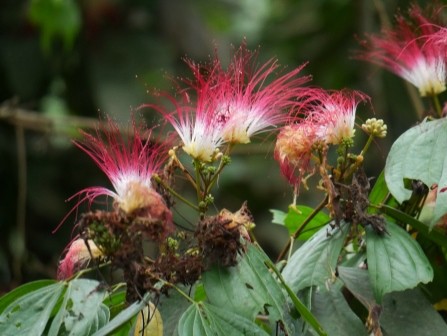
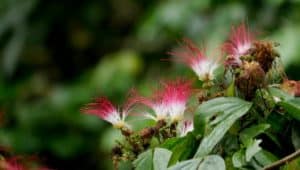
Calliandra is a genus of flowering plants in the pea family, Fabaceae, subfamily Mimosoideae. It contains about 140 species that are native to tropical and subtropical regions of the Americas.
The genus comprises herbaceous perennial plants, shrubs and rarely small trees growing 0.5–6 m tall, with bipinnate leaves.
The flowers are produced in cylindrical or globose inflorescences and have numerous long slender stamens which give rise to the common names powder-puff, powder puff plant, and fairy duster. These plants flower all year round.
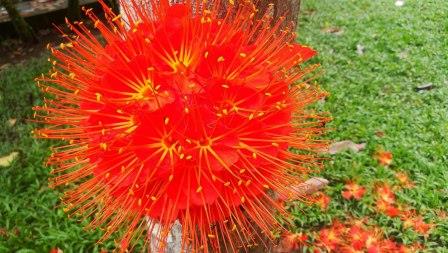
Brownea is a genus of about 30 species in the family Fabaceae. The genus is native to tropical regions of the Americas. The species are shrubs and trees growing to 20 m tall.
Zygia is a genus of flowering plants belonging to the legume family (Fabaceae). They are trees or shrubs, unarmed; Hermaphrodite plants.
The bipinnate leaves, with a single pair of pinnacles; The petioles are very reduced, and glandular. Inflorescences fascicles of chaplets or cauliflorous spikes; Stamens more than 10, monadelphous.
The fruit is flat, straight, slightly curved or rolled, membranous or coriaceous, dehiscent or indehiscent; Spherical-flattened or quadrangular seeds, papyraceous test, without aril.
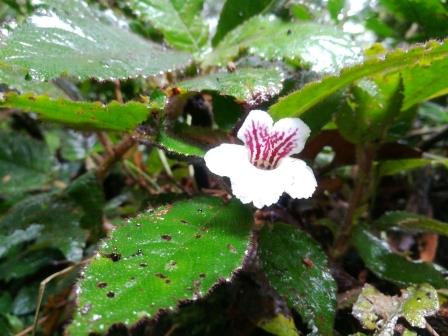
Nautilocalyx is a genus of plants in the family Gesneriaceae.
Characterized by an obligate terrestrial habit; leaf blades that are cuneate to attenuate at the base; and funnelform corolla with an oblique limb and reflexed petal lobes with glandular trichomes clustered on the lateral and lower inner surfaces of the throat.
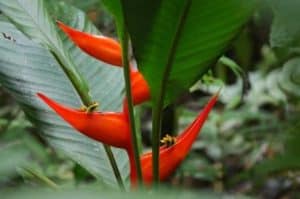
Heliconia is a genus of flowering plants in the Heliconiaceae. native to the tropical Americas, but a few are indigenous to certain islands of the western Pacific and Maluku. Many species of Heliconia are found in rainforests or tropical wet forests of these regions.
These herbaceous plants range from 0.5 to nearly 4.5 meters (1.5–15 feet) tall depending on the species. The simple leaves of these plants are 15–300 cm (6 in-10 ft). They are characteristically long, oblong, alternate, or growing opposite one another on non-woody petioles often longer than the leaf, often forming large clumps with age.
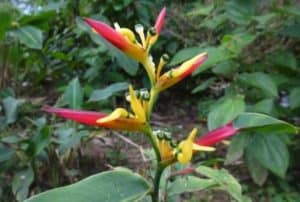
Their flowers are produced on long, erect, or drooping panicles, and consist of brightly colored waxy bracts, with small true flowers peeping out from the bracts.
The growth habit of heliconias is similar to Canna, Strelitzia, and bananas, to which they are related.
The flowers can be hues of reds, oranges, yellows, and greens, and are subtended by brightly colored bracts. The plants typically flower during the wet season.
These bracts protect the flowers; floral shape often limits pollination to a subset of the hummingbirds.
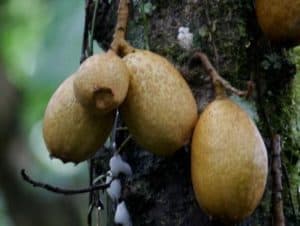
Grias is a genus of flowering plants in the family Lecythidaceae, It is native to northwestern South America, Central America, and Jamaica.
They are small to medium-sized trees, growing to 5-15 m tall. The leaves are evergreen, alternate, simple, broadly lanceolate, very large, up to 1 m long, with an entire or waved margin. The flowers are creamy white to yellow, with four petals; they are cauliflorous, produced in clusters on the trunk and stouter branches. The fruit is 6-15 cm long, with a fleshy coat; it is edible in several species.
Gustavia belongs to the part of the Lecythidaceae that has regular or actinomorphic flowers and is considered basal among the Neotropical genera.
It is widely distributed along rivers margins throughout Amazonia and in the Guianas and the distribution extends as far into north-eastern Brazil.
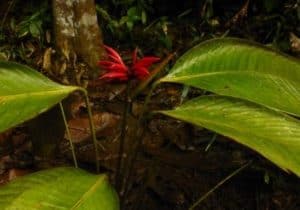
Calathea is a genus of plants belonging to the family Marantaceae. There are several dozen species in this genus.
Native to the tropical Americas; the large and tough leaves are popular for holding small items and wrapping forest food. many of the species are popular as pot plants due to their decorative leaves and, in some species, colorful inflorescences.
Calathea foliage is of importance to some herbivores, such as the caterpillars of the Owl Butterfly (Caligo sp). Due to habitat destruction, several species are threatened with extinction.
Calathea flowers are pollinated mainly by bees and other bugs. Hummingbirds visit the Calathea flowers throughout the forest. Calathea flower bracts come in various shapes – from beehive shape flower bracts to rattlesnake tail shapes.
Marcgravia is a genus of plant in the family Marcgraviaceae, native to the Caribbean Islands, Central America, and South America. Marcgravia is also is known as Shingle Vine.
It’s a fast-growing flowering vine found in moist, humid conditions of the rainforest climbing high on trees. It’s flat-leaved vines grab hold of tree trunks with aerial roots. Once it climbs high enough,
Marcgravia sends out lateral branches and blooms with pendulous flower clusters which are pollinated by birds and bats.
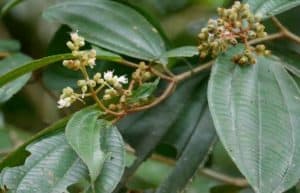
Miconia is a genus of flowering plants in the glory bush family, Melastomataceae, native to warm temperate tropical regions of the Americas.
The species are mostly shrubs and small to medium-sized trees up to 15 m tall. Some species are known by the common name “Johnny Berry”.
Miconia fruit is a favorite food of many birds. The leaves of some species are eaten by caterpillars of the interesting moth-butterflies (Hedylidae).
Many species are threatened by habitat destruction in their native range, and some are feared to be on the brink of extinction.
On the other hand, Miconia. is a contributing factor in the decline and maybe even extinction of other plants: it has become a highly invasive weed on a number of Pacific Islands where it was introduced.
Siparuna is a genus of plants belonging to the family Siparunaceae. Dioecious or monoecious sarmentose shrubs, treeless, or trees to 40 m high, aromatic due to abundant quantities of volatile oil in oil cells throughout the plant, sparsely or densely pubescent, found throughout the Neotropic ecozone
Leaves decussate or in whorls of 3-6, simple, exstipulate, those of a pair occasionally unequal in size, with stellate, lepidote, or simple hairs, the margin variously serrate, dentate, or entire. Inflorescences axillary or cauliflorous, cymose, sometimes fasciculate.
Fruit consisting of the fleshy receptacle which at maturity splits irregularly to expose (1-) 3-25 small drupelets with a conspicuous red or orange aril (in the neotropical species), the endocarp stony.
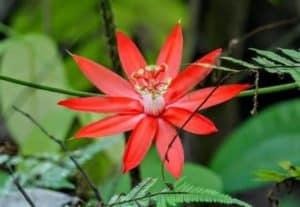
Passiflora is a genus of the family Passifloraceae.
Known also as the passion flowers or passion fruits, They are mostly vines, with some being shrubs, and a few species being herbaceous.
The family Passifloraceae has a pantropical distribution. Passiflora itself is absent from Africa, where many other members of the family Passifloraceae occur (e.g. the more plesiomorphic Adenia). Most species are found in South America, eastern Asia, southern Asia, and New Guinea.
The size and structure of flowers of other Passiflora species is optimized for pollination by hummingbirds (especially hermits like Phaethornis), bumble bees, Carpenter bees, wasps or bats, while others are self-pollinating.
The sword-billed hummingbird (Ensifera ensifera) with its immensely elongated bill has co-evolved with certain passion flowers, such as P. mixta.
The leaves are used as food plants by the larva of a number of lepidopterans (Heliconius and Agraulis).
To prevent the butterflies from laying too many eggs on any single plant, some passion flowers bear small colored nubs which resemble the butterflies’ eggs and seem to fool them into believing that more eggs have already been deposited on a plant that actually is the case.
Also, many Passiflora species produce sweet nutrient-rich liquid from glands on their leaf stems.
These fluids attract ants which will kill and eat many pests that they happen to find feeding on the passion flowers.
Pariana is a genus of the grass family Poaceae tropical American plants in. It is native to South America. Plants can be tall and stout, evergreen, perennial grass with densely leafy culms, usually growing 1 meter tall.
Capirona is a monotypic genus of flowering plants in the Rubiaceae family. The genus contains only one species,
A tree can grow up to a height of 30 meters. A canopy tree, which is native to northern South America. It grows white or green flowers between March and April.
It fruits between July and November, seeds are dispersed by the wind and water. Its wood is used for lumber.
During the flowering months, it produces an abundance of white, aromatic flowers, which are followed by elongated seed pods with 3-5 seeds inside.
Its bark is shed periodically to avoid lichens, fungi, epiphytes, and lianas. Bark has antifungal properties for the skin.
Faramea is a genus of plants in the family Rubiaceae.
Plants can be Shrubs or small trees, usually glabrous. Stipules are persistent, connate at the base, spit or arist at the apex. Inflorescence axillary, umbellate, with few flowers. Fruit drupaceous, coriaceous, subglobose; a seed.
The genus Faramea consists of more than 200 species distributed from Mexico to southern Brazil. In Ecuador there are 20 species best represented in the lowlands; 4 species have been recorded in the Andean forests:
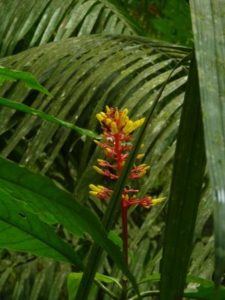
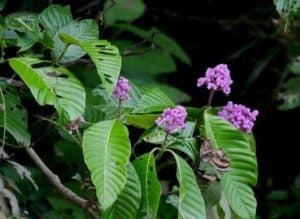
Palicourea is a plant genus in the family Rubiaceae. A wide range of habits from shrubs to small trees distributed widely in the New World tropics.
Palicourea plants are typically found in the understory and subcanopy of moist to wet tropical forests, from low to high elevations.
Palicourea flowers have well-developed tubes and are odorless, mostly brightly colored, and assumed to be pollinated by hummingbirds, and their fleshy blue or purple-black fruits are dispersed by birds.
Nearly all Palicourea species are distylous; this appears to be the ancestral condition for the genus, and it seems to have been lost in at least a few species on Caribbean islands
In Ecuador, at least 50 species are represented; 28 have been recorded in the Andean forests:
Psychotria is a genus of flowering plants in the Rubiaceae family. It is one of the largest genera of flowering plants.
The genus has a pantropical distribution and members of the genus are from low to mid-elevation understorey trees in tropical forests.
This heterostylous plant is hummingbird-pollinated, though it is visited by other insects such as butterflies, and its small blue fruits are dispersed by birds.
The presence of alkaloids has led to its common use as a medicinal plant within indigenous populations
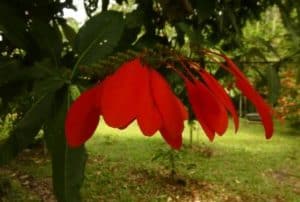
Warszewiczia is a genus of flowering plants in the Rubiaceae family. They are primarily tropical Central and South American trees and shrubs.
The inflorescences show leaf-shaped, bright-colored calycophylls, and expanded foliaceous structures made from floral petaloid with enlarged showy calyx-lobes.
Their main task is to attract pollinators such as butterflies. Perhaps the most famous member of the genus is W. coccinea (Chaconia), which is the national flower of Trinidad and Tobago.
Herrania is a genus of flowering plants in the family Malvaceae. Small tree. Its natural habitat is subtropical or tropical moist lowland forests; it is fragmented due to colonization, mining, and deforestation
Clavija is a strange and little-known genus in the Primulaceae from the tropics of the new world.
It is a palm-like, sparsely branched shrub to about 4 m tall, native to lowland forests in Colombia and Ecuador with long, undivided leaves, thick, waxy, scented flowers that are followed by edible, plum-sized, round, yellow fruits with a sharp taste.
Apeiba is a genus of flowering plants in the Malvaceae family. A fast-growing canopy tree in disturbed primary forest and the more open, secondary formations tree that can grow up to 30 meters tall.
The wood of Apeiba is soft and lightweight and used for rafts, the bark is fibrous and used for making rope.
The fruits are conspicuous woody-capsules, globose to flattened-globose, and covered with spines or bristles, giving the plant the local name of “monkey’s comb”
Vitex is a genus of flowering plants in the family Verbenaceae, a genus of shrubs and trees up to 35m tall. Some species have whitish bark that is characteristically furrowed. Leaves are opposite, usually, compound. The fruit is a drupe.

The first time you enter the Amazon Rainforest, you will feel overloaded with Shapes, Colors, Textures, Odors, and Taste from the vast community of plants living in here.
All trees, lianas, shrubs, epiphytes, and parasites are living in chaotic harmony, you will soon discover that everything in the Rainforest is connected and those connections start revealing in front of your eyes, we call it Wild Learning!
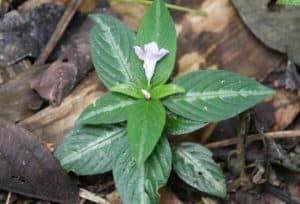

The Amazon Rainforest is home to as many as 80,000 plant species from which more than 40,000 species play a critical role in regulating the global climate and sustaining the local water cycle.

The Yasuní Biosphere Reserve is known to be one of the most biodiverse places on Earth.
In just one hectare in Yasuní, there are more tree, shrub, and liana (woody vines) species than anywhere else in the world. Check the numbers.
In a single hectare of the Yasuni (2.47 acres) 655 species of trees, were found which is equal to the continental US and Canada combined.
In a research plot of 25 hectares of primary Rainforest of the Yasuni, the number of tree species rises to 1,100.
Here is a list of the easy plants to recognize when exploring remote villages, or national park while you are visiting the Amazon Rainforest.

Download An illustrated list of Conspicuous Plants plants of the Amazon Rainforest of Ecuador.
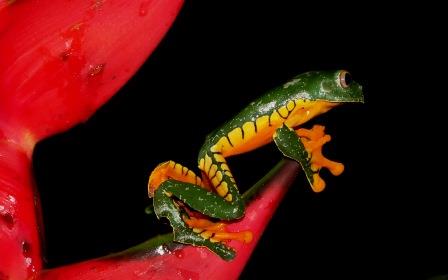

The Amazon Rainforest in Ecuador is home of several hundred species of Amphibians & Reptiles, the Yasuni Biosphere Reserve holds one the highest diversity in this forest creatures.
We have created a video to showcase a collection of images and videos of many species found in the Yasuni. Its ten minutes of interesting tree frogs, colorful dart poison frogs, venomous snakes, many tree snakes and giant anacondas, the odd-shapes turtles and marsupials tree frogs and many species more.
The Amazon Rainforest is home of these extraordinary group of forest creatures, some of them are active during the day in the forest litter sharing it with other critters, the ground can be a busy place for some, they make a better living up in the canopy in colonies of bromeliads or tree holes can be suitable for some forest rarities.
Listen to Rainforest Frogs
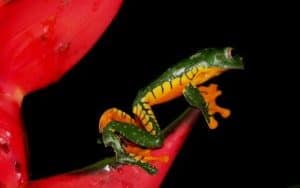
The Yasuní Biosphere Reserve has outstanding global conservation significance due to its extraordinary biodiversity and potential to sustain this biodiversity in the long term.
The Yasuni is the world’s greatest amphibian diversity on a landscape scale is found in the upper Amazon Basin of Ecuador and Peru, and in the Atlantic Forest of eastern Brazil.
Podcast: Play in new window | Download
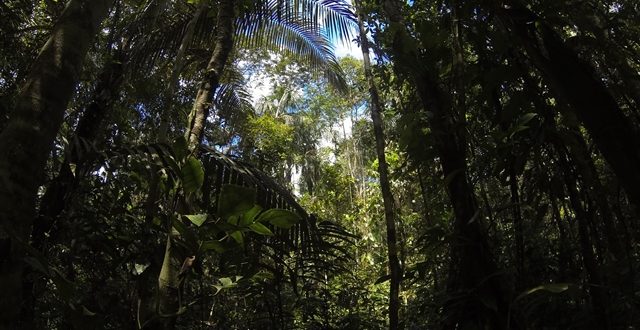
The Amazon Rainforest in Ecuador is tiny but it is one of the Most Biodiverse places in the World.
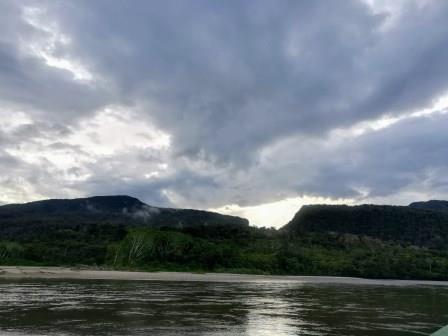
The Amazon Rainforest region in Ecuador is about 50% of the country but only represents 2 % of the half of the planet’s remaining rainforests in the world.
The Ecuadorian Amazon has a mosaic of Ecosystems and vegetation types including rainforests, seasonal forests, deciduous forests, and flooded forests.
The different Ecosystems of the Ecuadorian Rainforest holds a huge Diversity of Life, here is a list of the habitats and niches:
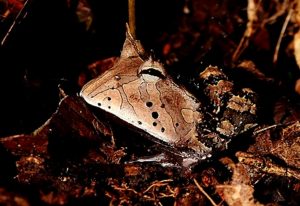
The Rivers in the Rainforest are the Lifeline and its history plays an important part in the local fauna flora and People.
The Rivers are an import player in the dynamics of the Amazon Rainforest in Ecuador, Rivers brings rich volcanic sediments to the Amazon Basin.
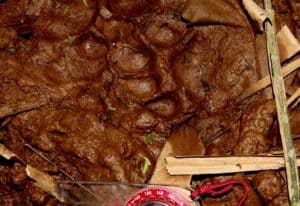
Here is a list of the Major Rivers, many bring water from the Andes and many are settled by indigenous and settlers today:
For thousands of years, the Amazon Rainforest is home for thousands and now millions of people. People live in different locations with perfect conditions to raise their families and keep their cultures alive. Today they are the Guardians of the Rainforest.
Ecuador put efforts to promote the Conservation of many ecosystems of the Amazon Rainforest in a series of conservation areas and education. Check the big ones below: